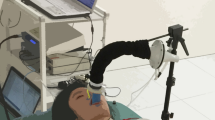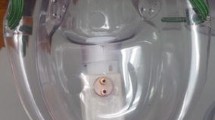Abstract
The measurement of air flow in patients suffering from breathing disturbances during sleep is usually accomplished by an oro-nasal thermistor located at the upper lip. The detection of hypopneas using this system may be difficult because the external thermistor may be unable to differentiate between high and low air flow rates. To improve the diagnosis of hypopneas we introduced a new method using internal thermistors contained in the same tube and using the same sensors as when recording pressures in the upper airways for localization of obstructions and measuring the respiratory work. The internal thermistors/pressure transducers (Camtip) were contained in a silicone tube that had a 1.9-mm external diameter. Standard polysomnography was performed, and internal flow and estimated volume were included in the polysomnographic setup. Ten consecutive hypopneas were studied in six patients having sleep-related breathing disorders. Preliminary results indicate that this method of monitoring air flow is more sensitive to minor changes in air flow than the external thermistor. It also simplifies the detection of hypopneas. Our findings shows that measuring air flow by internal thermistors is better than that of external devices to monitor tidal air flow. The internal sensors also facilitate the diagnosis of hypopneas in patients with sleep-related breathing disorders. Determinations of temperature changes and airway pressure in the pharynx can also be performed by the same sensors. Hence, no additional equipment is necessary for flow tracings when pressure recordings are used in the PSG setup.
Similar content being viewed by others
Author information
Authors and Affiliations
Additional information
Received: 24 August 1998 / Accepted: 13 July 1999
Rights and permissions
About this article
Cite this article
Akre, H., Skatvedt, O. Advantages of measuring air flow in the pharynx with internal thermistors. European Archives of Oto-Rhino-Laryngology 257, 251–255 (2000). https://doi.org/10.1007/s004050050233
Issue Date:
DOI: https://doi.org/10.1007/s004050050233




